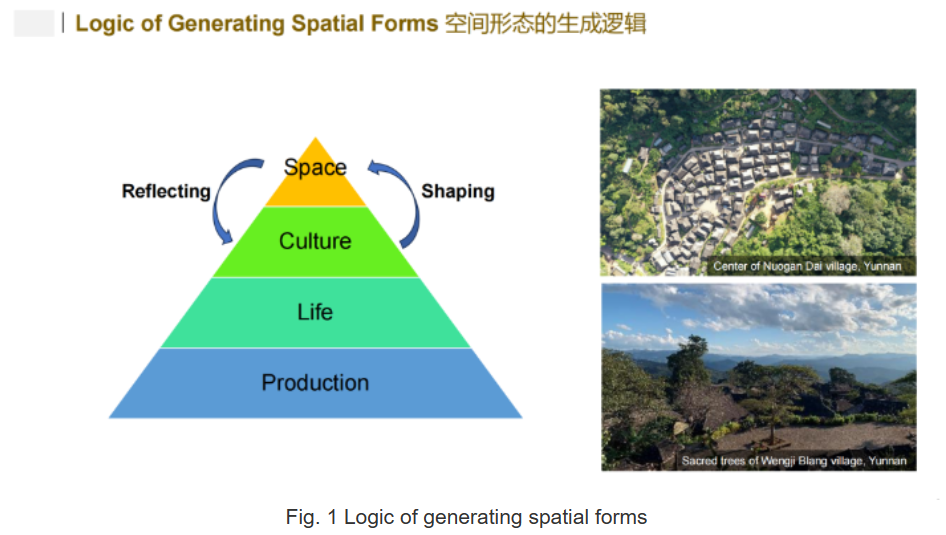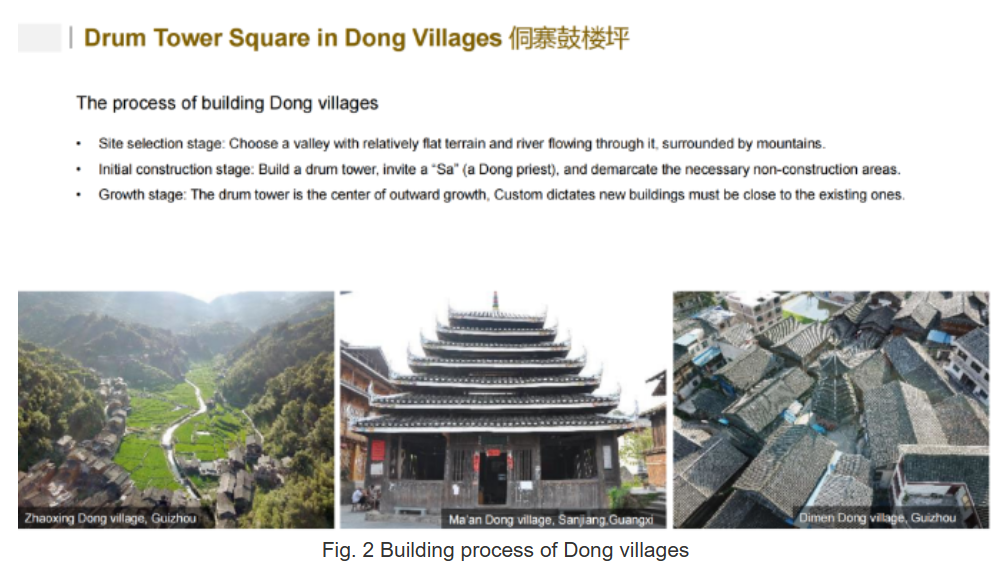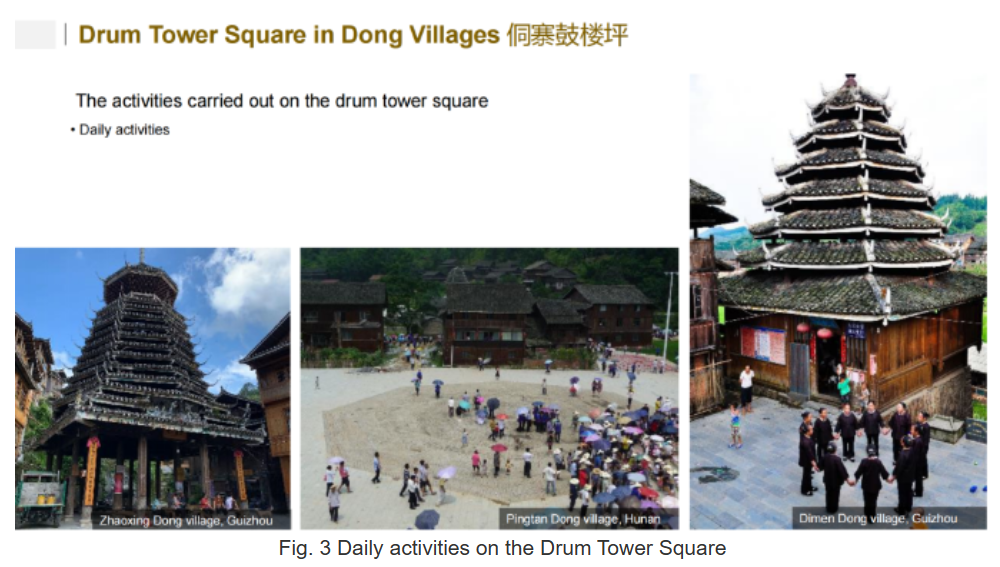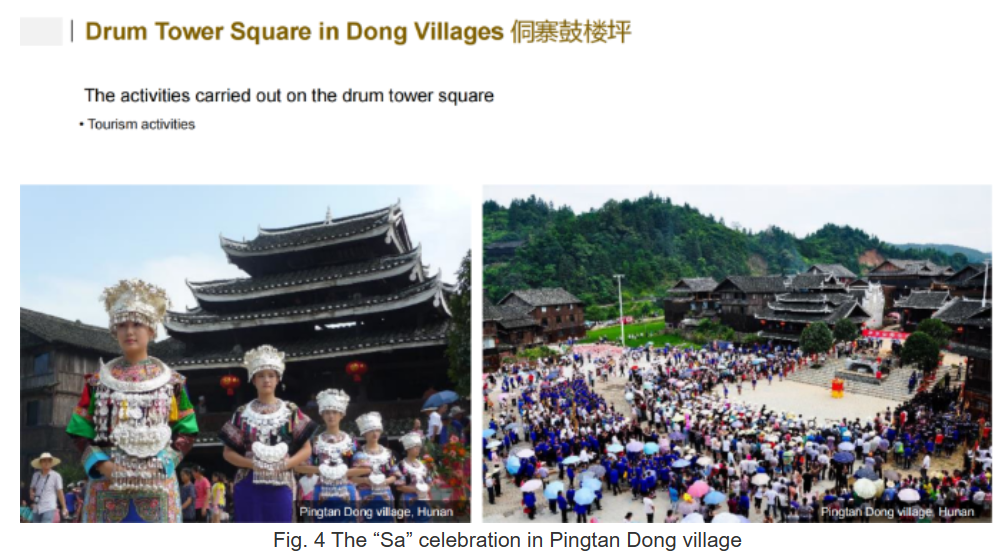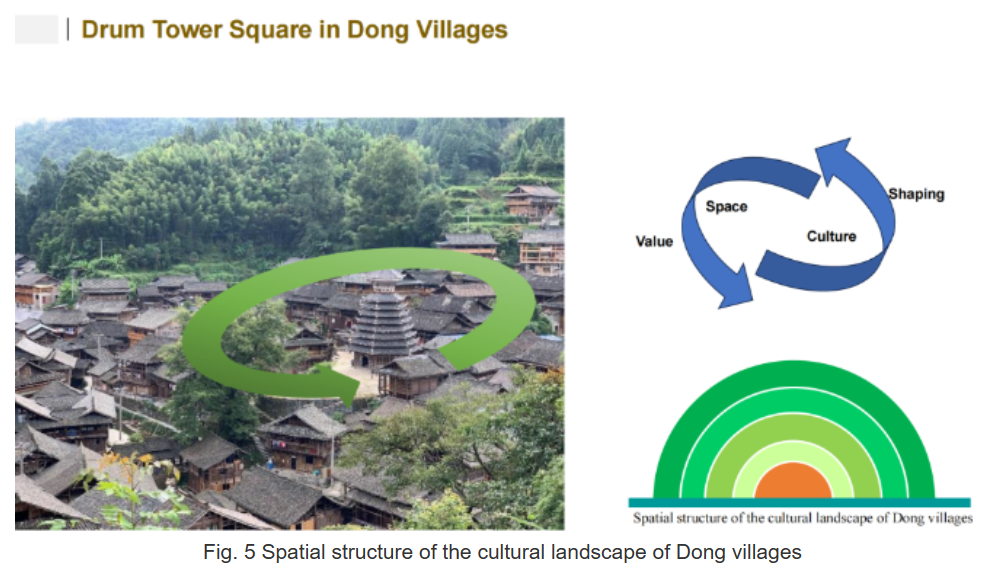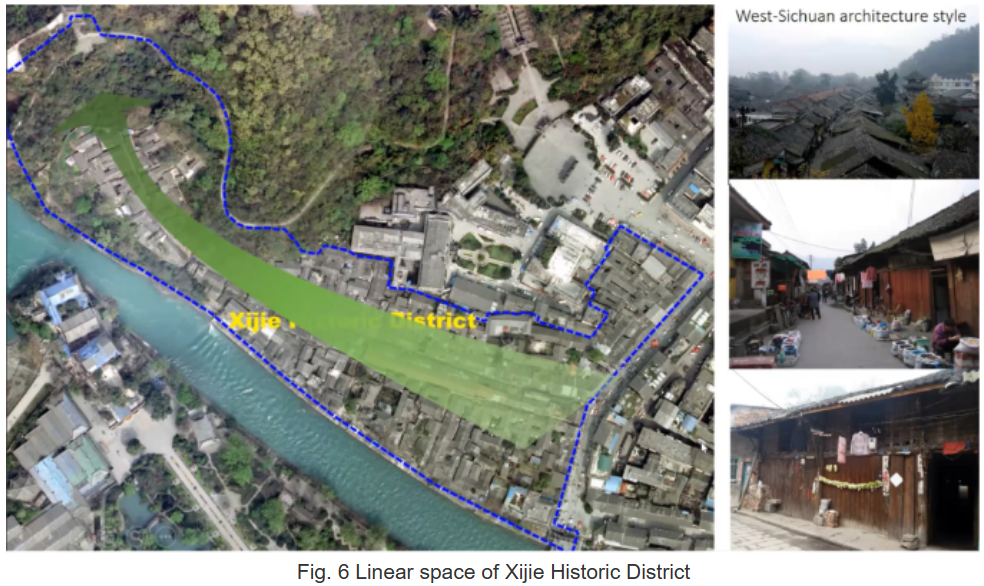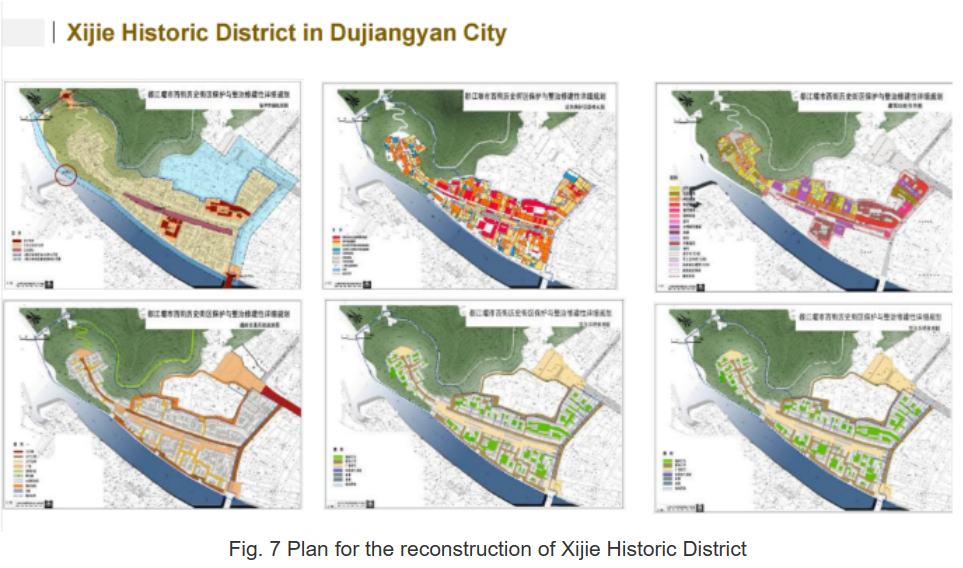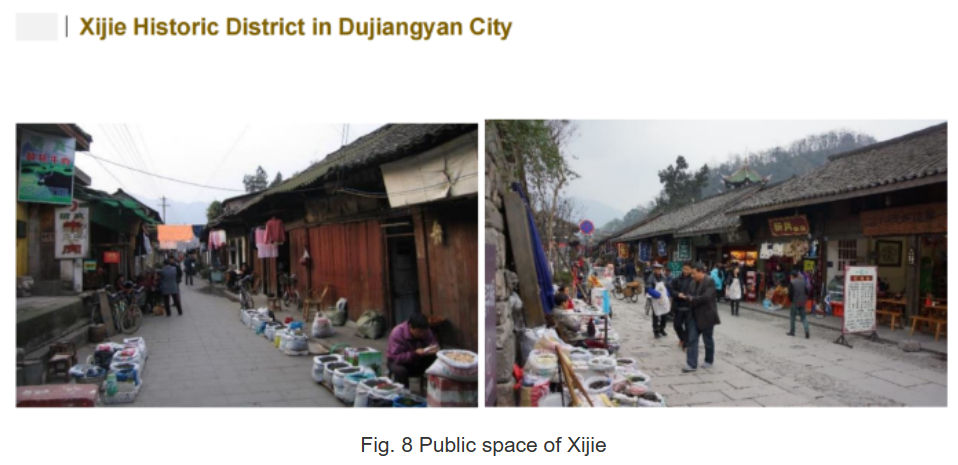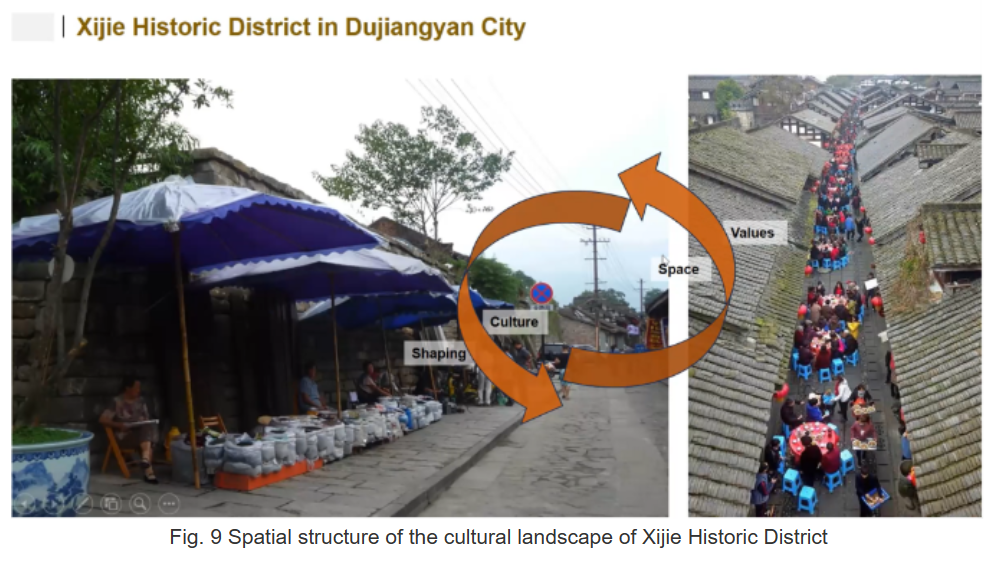| Interaction between Public Space and Community Culture in Heritage Sites |
| From:Heritap Author:KOU Huaiyun PublishDate:2024-03-18 Hits:581 |
| Public Spaces of Heritage Sites Public spaces in heritage sites refers to the areas within heritage sites that are open and accessible to the general public. There are diverse types of public spaces, including public spaces for labour and production, public spaces for communication and socialization and public spaces for religious activities. The commonality of these public spaces is that they all carry culture elements of the heritage sites, reflecting the specific local culture. The diversity of public spaces is a manifestation of social and cultural diversity. The generating logic of spatial forms can be understood through the principle of Marx’s historical materialism. The mode of production is a foundation, which is fundamental to the form of life, and different modes of production shape different forms of life, including the content, form, conditions, and environment of various life activities. The life form, in turn, shapes the cultural form, which is the sublimation of the life form, determined and influenced by the life form. At the same time, cultural form reflects people’s understanding and evaluation of the life form. The spatial form is a materialization of the cultural form, which is guided and influenced by the cultural form and also reflects people’s practice and innovation of the cultural form.
Public spaces can be either shaped through natural evolution or manual planning. In the case of Dali Dong Villages, Guizhou, the public spaces were shaped by natural evolution, adapting to their surrounding environment. Meanwhile, Xijie Historic District, Dujiangyan City, is a narrow public space created through manual planning and reconstruction. By studying and comparing these two cases, the formation process of public space and its interaction with community culture in heritage sites can be better understood.
The building process of Dong villages can be generally divided into four stages. In the site selection stage, the Dong people would choose a valley with relatively flat terrain and river flowing through it, surrounded by mountains. In the initial construction stage, they would first build a drum tower, invite a “Sa” (a Dong priest), and demarcate the necessary non-construction areas, which aims to insure the cultivation of food. The drum tower then acts as the center of outward growth in the growth stage, where custom dictates new buildings must be close to the existing ones. In the branching stage, the suitable land for construction decreases, the distance of newly reclaimed farmland increases, and some villagers separate from the original settlement and establish new villages.
Building a village with a drum tower as the center is the spatial expression of the Dong ethnic group’s social structure. A Dong village is a traditional clan society that is bonded by blood ties. A clan is equivalent to a large family, and the drum tower square acts as the “hall” of this family. Residences are clustered and compactly arranged by clans as units with some functions of the family being moved to the drum tower square. As a result, residences do not need courtyards or large halls.
Festival or worship activities are carried out on the Drum Tower Square as well. Nowadays, festival celebrations and worships activities are often combined with tourism activities. Realizing the attraction of their distinct culture to tourists and foreigners, the Dong people elaborated their celebrations and welcomed visitors around the world. In this case, the drum tower square holds an important role in publicizing the Dong culture and values.
The different activities carried out on the Drum Tower Square are a mix of daily life and livelihoods. Within the public space, the culture of the community and the collective identity are continuously strengthened. Generally, people grew a kind of inner identity and respect for these public spaces. They will not encroach on this space, and always keep this public space in the center of them. For the Dong ethnic minority, the Drum Tower and Drum Tower Square has become sacred in their eyes, and is one of the most important elements of their identity.
Xijie Historic District in Dujiangyan City Different from the natural circle structure of the Dong villages, the space of Xijie Historic District is linear, following the form of traditional trade route.
As the starting point of Songpan-Maoxian ancient trading route, Xijie acts as a diverse center for cultural and religious exchanges. The West-Sichuan style vernacular dwellings of Xijie reflects the ancient Chinese architecture philosophy of submitting to nature and taking advantage of circumstances.
Seriously hit by the earthquake in 2008, it was assessed that about half of the dwellings in Xijie needed to be repaired. The original plan for the reconstruction of Xijie was to remove the temporary structures along the old city wall and build a new architecture according to the traditional form. However, before the construction process, planners found that the local community were particularly interested in this public space. Residents communicated and played sports in this area. Based on the investigation, planners and the city government re-planned and decided to preserve the public space. After removing the temporary structures, the staff repaired and cleaned up the old city wall according to its original texture and workmanship.
Once the restoration was completed, the public space was immediately infused with a variety of functions. In the past, the linear and narrow space of Xijie lacked such a place for public communication. Now, residents gather here to communicate and play mahjong. Some vendors can do business along the street. With the opening of such a new public space, residents in Xijie felt that this kind of public space is so valuable that they spontaneously maintained the environment. For example, some elderly people have taken the initiative to maintain order on Xijie.
The case of Xijie Historic District illustrates the mutual influence of space and culture. It not only preserves the original community culture, but also creates some new culture. The post-disaster reconstruction of Xijie Historic District, Duiiangyan City, responded to the needs of the community and brought vitality to the development of Xijie. The public space of the heritage site is the space generated by the cultural needs of the community, and at the same time carries and shapes this new community culture.
Reflection |
|
|
- INTERNATIONAL CONFERENCE PRELIMINARY ANNOUNCEMENT & CALL FOR PAPERS
- Observation of the 46th Session of the World Heritage Committee
- Publication | WHITRAP Newsletter No. 63
- Training Workshop on Promotion of Ecotourism in UNESCO Designated Sites held in Mongolia
- The 2024 AWHEIC winners announced at the 46th Session of WHC
- News | UNESCO’s “World Heritage and Sustainable Tourism Programme” Phase II China Pilot Studies - Yellow (Bohai) Sea Migratory Bird Habitat Phase I Training Course Successfully Held
Copyright © 2009-2012 World Heritage Institute of Training and Research-Asia and Pacific (shanghai)


